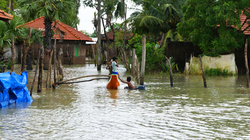Strengthening Local Urban Resilience Plans in Southeast Asia

UNDP, through varying levels of support, is instrumental in the development of disaster loss and damage databases and associated institutionalisation at the national and subnational levels in over 25 locations. Online disaster loss and damage databases are available for several countries in the South and Southeast Asian region. It is of critical value to these countries to assess and analyse information in these databases within the context of local climate change trends and impacts to explore inherent linkages between climate change and disaster losses.
Through the project “Analysis of National and Subnational Disaster Loss and Damage Databases – Establishing a Linkage to Climate Change Impacts to Strengthen Local Urban Resilience Plan”, ICLEI South Asia will analyse the disaster loss and damage data for three country databases (Indonesia, Cambodia and Sri Lanka), with an aim to correlate trends in loss and damage from disasters reported at the national and subnational levels (in the database), with disasters and damage recorded at the city level. These events and consequent damage will be analysed in the context of observed climate impacts in this region. Disaster impacts shall be disaggregated (to the extent possible) according to social groups and type of infrastructure affected. This analysis will then be used to inform cities about potential disaster and climate change related risks, identifying vulnerable social groups and infrastructure, in order to help the Cities to proactively prepare and respond to such events.
ICLEI South Asia will develop a city based “DRR-Climate Change” story for each city (two in each country), along with a methodology for developing the “DRR-Climate Change” linkage and identifying potential interventions to reduce urban vulnerability.
The initiative will thus support the achievement of three of the seven specific targets under the Sendai Framework for Disaster Risk Reduction (2015-2030),- (a) substantially reduce global disaster mortality by 2030, aiming to lower average per 100,000 global mortality between 2020-2030 compared to 2005-2015 (b) substantially reduce the number of affected people globally by 2030, aiming to lower the average global figure per 100,000 between 2020-2030 compared to 2005-2015 and (c) substantially reduce disaster damage to critical infrastructure and disruption of basic services, among them health and educational facilities.



